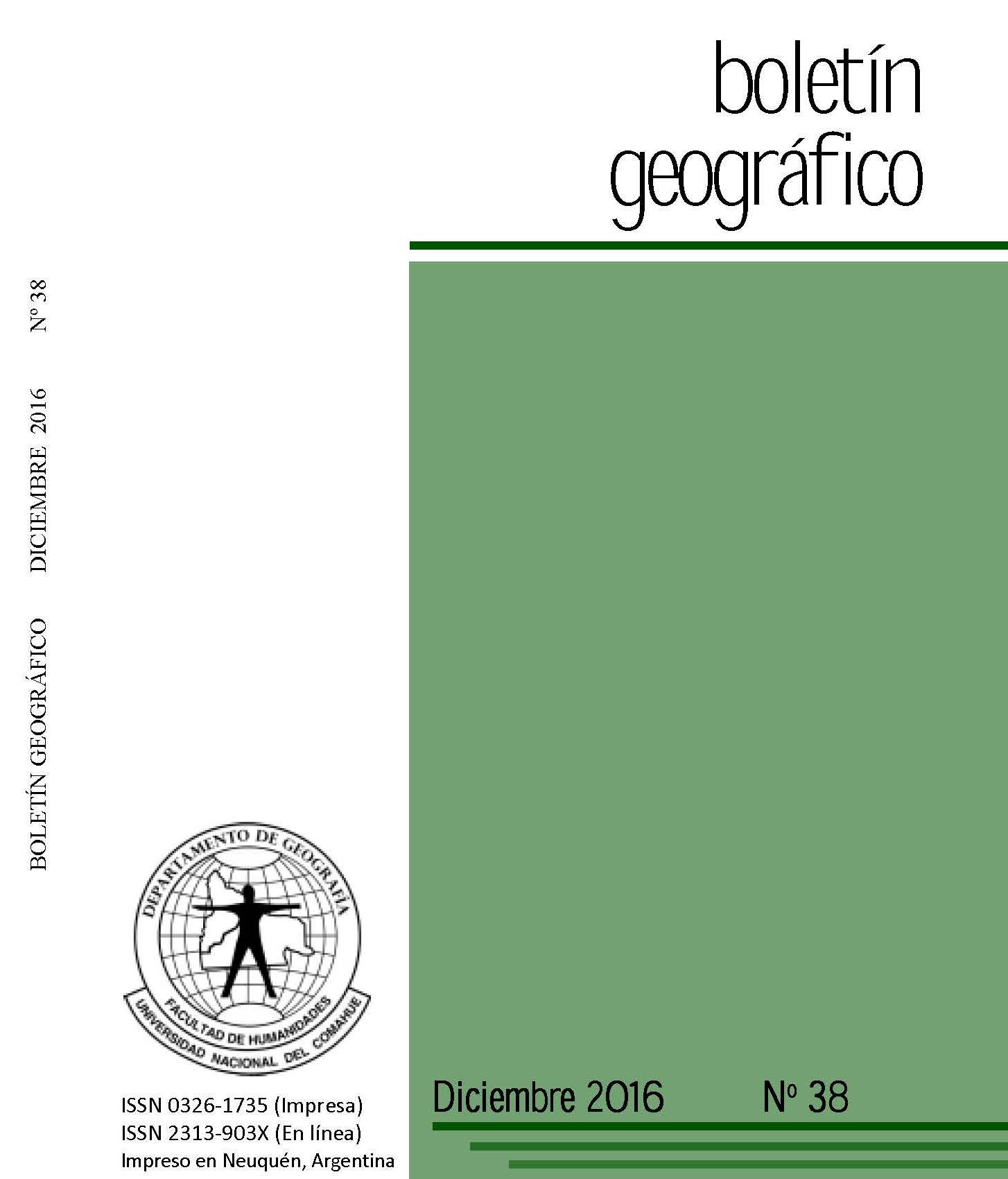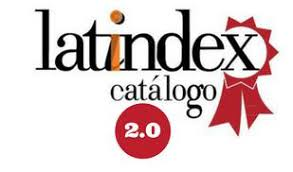Geopedology as base information to forest suitability zoning in a catchment of norwestern patagonia, argentina
Keywords:
soil-landscape relationships, río neuquén basin, Pinus ponderosa, GIS, volcanic soilsAbstract
Geopedology at a semi-detailed scale (1:50.000) was carried out in Buta Mallín catchment which includes an area of 21.065ha, in the northwest of Neuquén province, Argentine Patagonia. Geopedology provides a spatial dimension of soil-landscape relations, which are displayed in a map and its legend, showing the geoforms (contours) and their soils (content), based on the premise that soil is
landscape as well as profile. According to this approach three landscapes were recognized: glacial modeled mountains, plateau and valley. The relief consists mainly of steep to very steep slopes, and valley bottoms with poorly drained soils.
Lithology (parent material) corresponds to holocene volcanic ash in the western sector of the study area, while the eastern sector is dominated by tuff. Twenty terrain forms and their soils were identified. With this basic information, attribute tables were constructed considering landscape and soil properties. Regarding soils, physical fertility properties were considered, since these are the most correlated ones with Pinus ponderosa (pino ponderosa) growth, the main species used in afforestation in Patagonia. Those tables were included and analized with a GIS (Geographic Information System) to obtain a forest suitability map. The study area
shows four forest suitability classes. Suitable: 37ha; moderately suitable: 4.512ha; marginally suitable: 6.072ha; not suitable: 10.444ha. The main limitations of the area are the very steep slopes, height and the areas dominated by rock outcrops and detrital covers. Nothofagus antarctica (ñire) shrubs cover part of the suitable areas; because of conservation criteria of these natural communities, these lands were considered not suitable. On the other side, there are more than 4.000 ha of moderately suitable lands, which can be considered for a more detailed study.
Transhumant cattle raising is the main land use system in this catchment, which is an ancient culture of the Northern Neuquian peasants. Decision makers could boost the development of agroforestry systems. This combined land use system could allow to obtain timber products as well as recover sheepherding lands, which show presently important signs of degradation.
Downloads
References
BROQUEN P.; GIRARDIN, J.L.; FALBO, G.; ALVAREZ, O.. (1998). Modelos predictores de índice de sitio en Pinus ponderosa Dougl. en base a características del suelo andinopatagónico oriental, 37°-41° S, República Argentina.En: Revista Bosque 19(1): 71-79.
FAO. (1985). Evaluación de Tierras con fines forestales. M-30. Roma, Italia.
FERRER J.A. (1991). Geología. En: Estudio Regional de Suelos de la Provincia del Neuquén. Plano Nº 2. C.F.I. COPADE.
FERRER J.A.; IRISARRI J.A.; MENDIA J.M. (1991). Síntesis de los factores del medio geográfico y de las propiedades de los suelos. En: Ferrer, J. Estudio Regional de Suelos de la Provincia del Neuquén. Vol 1 Tomo 2.C.F.I. – COPADE.
FRUGONI, M.C. (2004). Estimación del contenido de humedad basada en las texturas descriptas a campo en andisoles bajo régimen údico (Norpatagonia, Argentina). XIX Congreso Argentino de la Ciencia del Suelo. Paraná, Entre Ríos.
FRUGONI, M.C.; DEZZOTTI, A.; MEDINA, A.; SBRANCIA, R. and MORTORO, A. (2016). Chapter 30: Design and Evaluation of an Afforestation Project Based on Geopedologic and Ecological Information in North-Western Patagonia, Argentina. 489-504. J.A. Zinck et al (Eds). Springer.
GONZÁLEZ DÍAZ, E.; FERRER, J.A. (1991). Geomorfología. En: Estudio Regional de Suelos de la Provincia del Neuquén. Plano Nº 6. C.F.I. – COPADE.
HUIZING G.; FARSHAD, A.; DE BIE, K. (1995). Land Evaluation (Land Use System Evaluation). ITC Lecture Notes. International Institute for Aerospace Survey and Earth Sciences. Enschede, The Netherlands.
LOGUERCIO, G. A.; LA MANNA, L.; GONDA, H.; MOHR Bell, D.; HEITZMMAN, L. y FRUGONI, C. (2015a). Herramientas para zonificar la calidad de sitio de pino ponderosa y sitios especiales para especies forestales de alto valor maderable en Neuquén. PIA 10092. BIRF 7520 AR. Informe Final (inédito).
LOGUERCIO, G.; FRUGONI, C. y LETOURNEAU, F. (2015b). Capítulo 7: La calidad de sitio. Manual de buenas Prácticas para el manejo de plantaciones forestales en el noroeste de la Patagonia. Editores: L. Chauchard, M.C. Frugoni, C. Nowak. Buenos Aires. Cap. 7. 141-164.
MIZOTA, C. and VAN REEWIJK, L.P. (1989). Clay mineralogy and chemistry of soils formed in volcanic material in diverse climatic regions. Soil Monograph 2. IRSIC. Quantum GIS Development Team (2016). Quantum GIS Geographic Information System. Open Source Geospatial Foundation Project. http://qgis.osgeo.org
SCHOENEBERGER P.J. WYSOCKY D.A.; BENHAM E.C.; BRODERSON W.D. (1998). Libro de Campaña para la descripción y muestreo de suelos. Versión 1.1. Centro Nacional de Relevamiento de Suelos. Servicio de Conservación de Recursos Naturales. Departamento de Agricultura de los Estados Unidos. Lincoln, Nebraska. Traducción al español por investigadores de AICET, Instituto de Suelos y Evaluación de Tierras. INTA, 2000
SHOJI S.; M. NANZYO and R. DAHLGREN. (1993). Volcanic Ash soils. Genesis, properties and utilization. Elsevier.
Soil Survey Staff. 12th Edition. (2014). Keys to Soil Taxonomy. U.S. Department of Agriculture (USDA), Natural Resources Conservation Service (NRCS).
YEMEFACK M. & W. SIDERIUS. (2016). Chapter 16: Applying a Geopedologic Approach for Mapping Tropical Forest Soils and Related Soil Fertility in Northern Thailand. 265-284. In: Geopedology. An Integration of Geomorphology and Pedology for Soil and Landscape Studies. J.A. Zinck et al (Eds). Springer. 556 pp.
ZINCK J.A. (2016). The Geopedologic Approach. Chapter 4. 27-60. In: Geopedology. An Integration of Geomorphology and Pedology for Soil and Landscape Studies. J.A. Zinck et al (Eds). Springer.
Downloads
Published
How to Cite
Issue
Section
License
Copyright (c) 2016 Boletin GeográficoTransfer of rights and data processing
The acceptance of an article for publication in the Journal Geographic Bulletin implies the cession of the rights of printing and reproduction, by any means and means, of the author in favor of the Department of Geography of the National University of Comahue, which will not reject any request reasonable for the authors to obtain permission to reproduce their contributions. The total or partial reproduction of the works published in the Geographic Bulletin must be done citing the origin, otherwise, the copyright is violated.
Likewise, it is understood that the concepts and opinions expressed in each work are the sole responsibility of the author, without being responsible or in solidarity, necessarily, neither the editorial staff nor the editorial staff.
It is the responsibility of the authors to be able to provide interested readers with copies of the raw data, procedure manuals, scores and, in general, relevant experimental material.
Likewise, the Management of the journal guarantees the appropriate treatment of personal data
COPYRIGHT TRANSFER FORM

















 Journal of the
Journal of the 